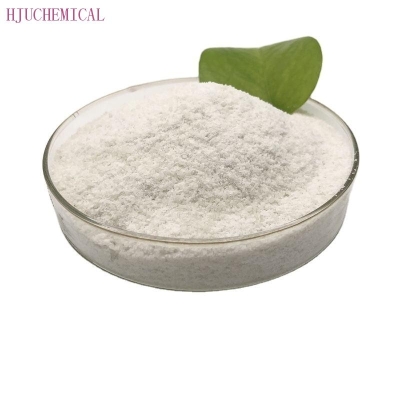-
Categories
-
Pharmaceutical Intermediates
-
Active Pharmaceutical Ingredients
-
Food Additives
- Industrial Coatings
- Agrochemicals
- Dyes and Pigments
- Surfactant
- Flavors and Fragrances
- Chemical Reagents
- Catalyst and Auxiliary
- Natural Products
- Inorganic Chemistry
-
Organic Chemistry
-
Biochemical Engineering
- Analytical Chemistry
- Cosmetic Ingredient
-
Pharmaceutical Intermediates
Promotion
ECHEMI Mall
Wholesale
Weekly Price
Exhibition
News
-
Trade Service
With increasing attention to global warming and energy consumption, passive cooling based on environmentally friendly and renewable materials is of extraordinary significance
.
In this way, the object can be effectively cooled without energy consumption, which will have a significant impact on the world's energy pattern and global climate
.
However, passive radiant cooling materials often require complex preparation methods, and are damaged and non-renewable, which require huge resource consumption and may be harmful to the environment
.
This poses a huge challenge to the development and promotion of passive radiant cooling materials
.
? In order to solve this problem, the Chen Yongping team of Southeast University used a locally restricted polymerization method to prepare a nano-microstructured plastic with replasticity and self-healing properties
.
The plastic has a high emissivity of about 0.
9 in the infrared region and a solar reflectance of 96%
.
Compared with traditional plastics, nano-microstructured plastics have better cooling efficiency for tall buildings and miniature electronic devices
.
In addition, the physical cross-linking network in the nano-microstructured plastic makes the material itself replasticized and self-healing
.
Therefore, this type of material not only effectively achieves thermal management, but also has environmentally friendly characteristics
.
The research was published on "Adv.
Funct.
Mater.
" as "Reconfigurable and Renewable Nano-Micro-Structured Plastics for Radiative Cooling"
.
? "?? [Design of nano-microstructured plastics] There are two main points in the design of passive radiation cooling materials: 1) enhance the solar reflectance of nanometer wavelengths and improve the heat dissipation rate of micrometer wavelengths, 2) introduce reversible crosslinking physics The network is used to give the material self-healing properties
.
To this end, the author prepared a material with a special nano-microstructure through local restricted polymerization
.
Taking amphiphilic methacrylic acid as an example, the hydrophilicity and hydrophobicity can be adjusted by introducing cations, which can be formed in water.
Micron droplets and uniformly dispersed
.
Due to the hydrophobic association, the monomers are enriched at the liquid-liquid interface to undergo restricted polymerization, and the nano-enriched polymers form physical crosslinking points, and finally form a hydrogel with a microporous network
.
After freeze-drying, the author obtained a white plastic, in which the nano-scale framework and microporous structure are well preserved, and the average pore size of the microporous network is 10μm
.
? Figure 1.
Design schematic and electron microscope image of nano-microstructure plastics? [Photonic properties and self-healing properties of nano-microstructure plastics] Nano-microstructure plastics show a bright white color.
Sunlight has a high reflectivity of about 96%, and it exhibits an average high emissivity of 0.
9 in the infrared region
.
By establishing an energy balance model, the author calculated the net cooling power of nano-microstructured plastics.
Due to the existence of nano-microstructures, its cooling efficiency is 140 W·m-2 at night and 100 W·m-2 during the day.
Compared with previously reported materials, microstructured plastics theoretically exhibit better passive radiation cooling performance
.
Figure 2.
Photonic properties of nano-microstructured plastics.
Since the microporous network is cross-linked by nano-scale confined polymers, the interaction is reversible.
Therefore, nano-microstructured plastics have the ability to reshape and self-repair.
.
The difference is that the self-healing process cannot proceed spontaneously and requires external stimuli (such as adding water)
.
During the repair process, dynamic hydrogen bonds attract polymer chains through the fracture surface and diffuse each other
.
The entire process can be completed within 48 hours .
The difference in photon performance before and after repair is less than 6%, and the mechanical performance is basically unchanged
.
Figure 3.
Replasticization of nano-microstructured plastics? [Cooling performance of nano-microstructured plastics] Compared with conventional plastics (such as polycarbonate) commonly used in the automotive and electronics industries, the author found that nano-microstructured plastics have lower levels The thermal conductivity (0.
17 W·m-1·K-1)
.
Subsequently, after eliminating the effects of heat conduction and convection, the author compared the radiant cooling performance of polycarbonate sheets and nano-microstructured plastics during the day.
.
Place the two materials on the artificial lawn.
After 30 minutes of sun exposure, the temperature of the uncovered lawn rises to 52.
7°C, the temperature under the polycarbonate sheet is 42.
1°C, and the temperature under the nano-microstructure plastic is only 39.
2 ℃
.
This reflects the excellent performance of nano-microstructured plastics in outdoor cooling during the day
.
Figure 4.
The cooling performance of nano-microstructured plastics under sunlight.
Later, the author further used two materials to cover electronic devices and compared their cooling performance in electronic devices
.
After power on, the device temperature can rise to 76.
4°C
.
When the material is covered, the surface temperature of the polycarbonate is 31.
6°C, while the surface temperature of the nano-microstructure plastic is 37.
3°C, which indicates that the nano-microstructure plastic can release more heat from the surface
.
After removing the material, the temperature of the device covered with nano-microstructured plastic dropped to 72.
3°C, which was 8.
6°C lower than that of commercial polycarbonate and 4.
1°C lower than that of the bare metal
.
These results indicate that nano-microstructured plastics are expected to be further used in cooling devices for electronic products and equipment
.
? Figure 5.
The cooling performance of nano-microstructured plastics in electronic devices
.
In this way, the object can be effectively cooled without energy consumption, which will have a significant impact on the world's energy pattern and global climate
.
However, passive radiant cooling materials often require complex preparation methods, and are damaged and non-renewable, which require huge resource consumption and may be harmful to the environment
.
This poses a huge challenge to the development and promotion of passive radiant cooling materials
.
? In order to solve this problem, the Chen Yongping team of Southeast University used a locally restricted polymerization method to prepare a nano-microstructured plastic with replasticity and self-healing properties
.
The plastic has a high emissivity of about 0.
9 in the infrared region and a solar reflectance of 96%
.
Compared with traditional plastics, nano-microstructured plastics have better cooling efficiency for tall buildings and miniature electronic devices
.
In addition, the physical cross-linking network in the nano-microstructured plastic makes the material itself replasticized and self-healing
.
Therefore, this type of material not only effectively achieves thermal management, but also has environmentally friendly characteristics
.
The research was published on "Adv.
Funct.
Mater.
" as "Reconfigurable and Renewable Nano-Micro-Structured Plastics for Radiative Cooling"
.
? "?? [Design of nano-microstructured plastics] There are two main points in the design of passive radiation cooling materials: 1) enhance the solar reflectance of nanometer wavelengths and improve the heat dissipation rate of micrometer wavelengths, 2) introduce reversible crosslinking physics The network is used to give the material self-healing properties
.
To this end, the author prepared a material with a special nano-microstructure through local restricted polymerization
.
Taking amphiphilic methacrylic acid as an example, the hydrophilicity and hydrophobicity can be adjusted by introducing cations, which can be formed in water.
Micron droplets and uniformly dispersed
.
Due to the hydrophobic association, the monomers are enriched at the liquid-liquid interface to undergo restricted polymerization, and the nano-enriched polymers form physical crosslinking points, and finally form a hydrogel with a microporous network
.
After freeze-drying, the author obtained a white plastic, in which the nano-scale framework and microporous structure are well preserved, and the average pore size of the microporous network is 10μm
.
? Figure 1.
Design schematic and electron microscope image of nano-microstructure plastics? [Photonic properties and self-healing properties of nano-microstructure plastics] Nano-microstructure plastics show a bright white color.
Sunlight has a high reflectivity of about 96%, and it exhibits an average high emissivity of 0.
9 in the infrared region
.
By establishing an energy balance model, the author calculated the net cooling power of nano-microstructured plastics.
Due to the existence of nano-microstructures, its cooling efficiency is 140 W·m-2 at night and 100 W·m-2 during the day.
Compared with previously reported materials, microstructured plastics theoretically exhibit better passive radiation cooling performance
.
Figure 2.
Photonic properties of nano-microstructured plastics.
Since the microporous network is cross-linked by nano-scale confined polymers, the interaction is reversible.
Therefore, nano-microstructured plastics have the ability to reshape and self-repair.
.
The difference is that the self-healing process cannot proceed spontaneously and requires external stimuli (such as adding water)
.
During the repair process, dynamic hydrogen bonds attract polymer chains through the fracture surface and diffuse each other
.
The entire process can be completed within 48 hours .
The difference in photon performance before and after repair is less than 6%, and the mechanical performance is basically unchanged
.
Figure 3.
Replasticization of nano-microstructured plastics? [Cooling performance of nano-microstructured plastics] Compared with conventional plastics (such as polycarbonate) commonly used in the automotive and electronics industries, the author found that nano-microstructured plastics have lower levels The thermal conductivity (0.
17 W·m-1·K-1)
.
Subsequently, after eliminating the effects of heat conduction and convection, the author compared the radiant cooling performance of polycarbonate sheets and nano-microstructured plastics during the day.
.
Place the two materials on the artificial lawn.
After 30 minutes of sun exposure, the temperature of the uncovered lawn rises to 52.
7°C, the temperature under the polycarbonate sheet is 42.
1°C, and the temperature under the nano-microstructure plastic is only 39.
2 ℃
.
This reflects the excellent performance of nano-microstructured plastics in outdoor cooling during the day
.
Figure 4.
The cooling performance of nano-microstructured plastics under sunlight.
Later, the author further used two materials to cover electronic devices and compared their cooling performance in electronic devices
.
After power on, the device temperature can rise to 76.
4°C
.
When the material is covered, the surface temperature of the polycarbonate is 31.
6°C, while the surface temperature of the nano-microstructure plastic is 37.
3°C, which indicates that the nano-microstructure plastic can release more heat from the surface
.
After removing the material, the temperature of the device covered with nano-microstructured plastic dropped to 72.
3°C, which was 8.
6°C lower than that of commercial polycarbonate and 4.
1°C lower than that of the bare metal
.
These results indicate that nano-microstructured plastics are expected to be further used in cooling devices for electronic products and equipment
.
? Figure 5.
The cooling performance of nano-microstructured plastics in electronic devices







